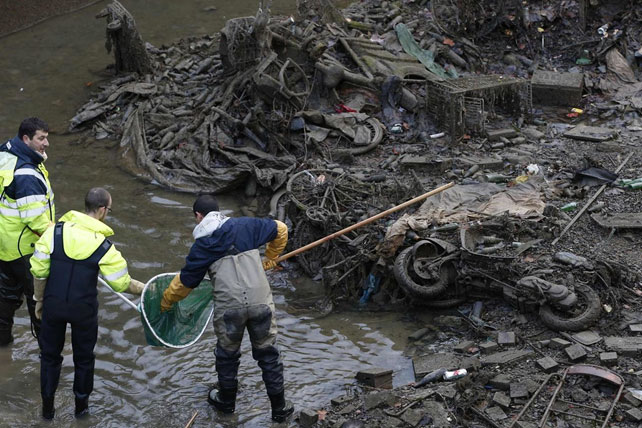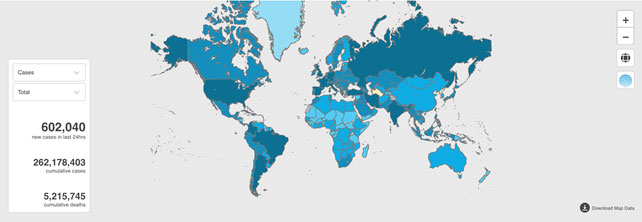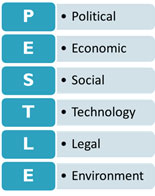OMiGron! – This “Black Swan” is still teaching us!
Will the shocks to our supply chains never end?
| TLDR – 🙂 How do we plan for supply management in an uncertain world? The COVID pandemic has some lessons for us in planning and managing the future of our businesses. Chief among these, is the need to develop broader and deeper systems for gathering information and trends about the wider external world, and with a greater degree of systems thinking, regularly analyse the potential risks and opportunities emerging around us. As leaders, it is possible to enhance these skills, and create processes and data sources to build more effective information systems. This is activity 3 from our Strategic Enterprise Improvement System, based on the QBS Framework, developed by Associates in Process Improvement. |
Let me use the term “Black Swan” as an unpredicted event that has an outsized impact, without ascribing Nassim Nicholas Taleb’s 3rd characteristic of being explained in retrospect1.
People are generally terrible at prediction. We often do not critically observe our biases around decision-making (whilst this is not an article about cognitive biases, they do play a big part in the judgement errors we make). Indeed, unless we are aware of our biases, and have a critical learning mind and good sources of information for synthesis, many of our business decisions are as good as gambling. This has turned out to be the case with global supply management. For years, our supply chains have been tuned to the “peace and quiet” of the Naughties and Tens (following the shock of 9/11). Asia, particularly Hong Kong, China and Singapore, had a little foretaste with SARS, and the GFC of 2008 had considerable impact in terms of slow down, but those were quickly forgotten. We were lulled by the perceived “predictability” of shipping and supply systems across Asia, Europe and the Americas.
And then came along the COVID-19 pandemic that many scientists and epidemiologists were saying was inevitable but no one really predicted. Travel was curtailed, businesses were shuttered, people were quarantined and encouraged to stay at home. Working remotely if they could, people were warned to wear masks if they must go out in public. Despite the epidemiological sense of all these actions, the impact on our lives meant that many have chafed at the measures put in place.
The impact on supply chains from the pandemic have been enormous too. However, as McKinsey2 have noted (along with others, for example this excellent 20 min clarification video article by Wendover Productions3), the COVID crisis didn’t really cause the current supply chain issues, it just simply exposed the weaknesses. Like the surprises found at the bottom of a drained canal – the low water level exposes all kinds of unexpected things, including looted safes, and many more unsavoury things4. Many of these port, internal transport and dependency issues have existed for some time. It just took a shock like the pandemic to expose the lack of agility in many supply chain designs.

A drained canal in Paris in 2016
https://www.relativelyinteresting.com/en-a12661-old-canalrli/
When this current COVID Black Swan landed: Planning was disrupted, supply was disrupted, shipping was disrupted, travel was disrupted and retail distribution and sales were disrupted. None of this could be controlled, as governments brought down policies to minimise the spread of what has turned out to be a deadly disease, with 5.2 million deaths recorded as of December 1, 20215, and many more likely. Many businesses will feel the effect of this for years to come, with supplies in some commodities (chips in the automotive industry for example) not expected to achieve parity for at least another 12 months, and costs predicted to stay high, well into 2022.

Source: https://covid19.who.int/, Dec 1, 2021
Yet not all businesses, products and delivery systems have been catastrophically impacted. Some have been able to adapt and emerge with limited long-term negative consequences. For example, businesses who have been able to change their sourcing to minimise the use of sea shipping. One of our clients was able to change the source of some of their products, allowing them to continue to sell, once the new supply had arrived. Some have even thrived, having positioned themselves to take advantage of the situation, for example, online retailers have expanded based on an ongoing need for contactless consumer purchasing.
There are really 5 ways to judge supply systems:
- Quality (of supply)
- Reliability (predictability and lead time)
- Efficiency (speed and cost)
- Flexibility (resilience)
- Complexity (simplicity to manage)
Dr. W Edwards Deming talked about partnering with as few suppliers as possible, with an intent to optimise the quality of inputs to your business, as measured by the above.
What is often missing is a broad enough system, shared across the supply system, for obtaining information, analysing it with a lens of opportunity and risk to the businesses at hand (forecasting), and strategically envisioning changes to the business (and supply system) to optimise the impact (lessen negative consequences and enhance positive ones). Without such an integrated system of information along the supply chain, risks to supply known by one party may not be known by others and hence shocks that might have been ameliorated, now inevitably result in nasty surprises..
Every business leader I know is extremely busy. As an executive and business coach, when I delve into this ‘busy-ness’, it is often related to dealing with matters that might have been regularised into the business (through clear policies, empowerment, training, and effective process design – stuff that happens often in a work situation needs a method to manage). ‘Mea culpa!’ I can’t count the number of times that I have found myself in the same situation.
When I ask leaders how they will change things to better handle their situations and businesses, it inevitably involves gaining more insight, and planning better for the future, with a clear vision for what needs to be achieved. Yet, I see few businesses really investing in the information sources and processes for gathering external data, to look for patterns or the potential for predictable events that could have a negative impact to the business, or lead to positive opportunities.
As a McKinsey article6 I posted on LinkedIn earlier points out, many businesses are investing furiously in digitisation and analytical software, but how many are critically reviewing their data and information sources.
The McKinsey article points out that most of the investment is going into more finely analysing the real-time performance of their supply chain. This is indeed important and empowering as a business, but also narrow. How many businesses are searching widely for the next Black Swan, or Black Crow or Golden Goose or Blue Bird? The last 3 terms I made up and use (based on Taleb’s idea), but I am sure you get the point. I define a Black Crow as an event that may have large negative effect on a business but is more predictable than a Black Swan, and may be specific to that industry, such as a bad weather event or earthquake, or the overbuild of ships that will likely bring about the next pricing drop in the shipping industry (an industry fraught with cyclical highs and lows). On the other side, I define a Golden Goose as a once in a lifetime opportunity, such as the rise of a new technology (for example private space travel, or early adopters to Bitcoin.) Once the industry is established, the gains will never be as great again. And finally, I define Blue Birds as those opportunities that regularly arise, which when addressed early enough, can bring huge success to a company.
The difference between a Black Swan (or Golden Goose) and a Black Crow (or Blue Bird) is that Black Crows/Blue Birds can be more easily foreseen with an effective broad system for obtaining information. However, even Black Swans or Golden Geese might be prepared for, with deep enough risk and opportunity diagnosis.
There is a big business for consultants in trend reporting, which companies like McKinsey, EY and others sell profitably, but how many businesses are seeking diverse sources for PESTLE analysis (diagram below)?. Such examination is a matter of strategy and more than just a marketing tool.

Should a car company take notice of changes in the number of krill spawning in Antarctica? Perhaps not, but Japanese restaurants groups serving fresh Sushi might want to. Certainly, all businesses should be considering the potential rise of more pathogens that could either extend this pandemic or create a new one. What of the impact of global warming? How are businesses planning for these things and others? I have no doubt that the insurance industry is calculating the likely changes, but then again, they are the experts in risk calculation.
In supply chain education, we are often encouraged towards systems thinking, in terms of inputs and outputs, and links further up the chain. This is amply illustrated by “The Beer Game”, a simulation developed by Jay Forrester at MIT in the 1960s. This is a great experiential learning that is often used in supply chain and other systems thinking about education. If you have never experienced it, check out the video (see reference list below)7, or for a bit more detail, see the MIT paper in the list below8.
‘Strategic Systems Thinking’ is a fundamental skill for leaders wishing to envision the future and foresee the potential trajectory of evolving trends, particularly in this world of ever-accelerating change. Having led Beer Game simulation workshops and coached leaders in Systems Thinking, I have seen some amazing transitions in the way they view their business and its place in society.
Now that this Black Swan is aging a little, what next? Well, unfortunately I don’t think this is over yet. We may be working on the possibility that we will soon rise from the “ashes” of this COVID pandemic, however, with the Omicron variant emerging9, and other variants sure to evolve, it makes sense to consider all scenarios in front of us.
What will you do to survive and perhaps even thrive, should the 27th variant of SARS-COV-2 turn out to be particularly virulent and bring universal lockdowns again? Or the opposite, that it all of a sudden disappears and the pressure is gone? Or a serious military conflict starts? And what of the more predictable Black Crows and Blue Birds? … How are you thinking about the future and preparing for the scenarios that may emerge? Will you learn from these events and their impacts … or forget, and revert to the mean, with a sigh of relief? How will you change the way you plan the future of your business?
As the Wendover Productions3 video (~min 11:45) points out, JIT was designed for resilient supply systems where event the biggest shocks could be managed, and strategic inventory for those elements, even well further up the supply chain, that may be at risk in a crisis.
From a system thinking perspective, you might find the “Introduction to Systems Thinking” video by James Swanson interesting and thought provoking. Whilst somewhat simplistic, it is a start.
Profound Knowledge Partners Asia can help enterprises enhance strategic planning, and accelerate growth and business improvement through the Strategic Enterprise Improvement System. Activity 3 of the 5 Activities of Leaders focusses on building an Information System (with a customer & market focus), which includes broader trend analysis. To learn more, check out the link here or contact us.
- “Fooled By Randomness: The Hidden Role of Chance in Life and in the Markets”, Nassim Nicholas Taleb, 2nd, Random House New York, 2004
- “When are shipping rates going to normalize?”, Steve Saxon and Jaana Remes interview, McKinsey & Co, Nov 21, 2021
- “Why are there now so many shortages (It’s not COVID)?”, Wendover Productions YouTube channel, Jun 22, 2021
- “’Looted’ safes found in drained River Soar lock”, BBC.com, Feb 2015
- World Health Organisation dashboard as of December 1, 2021
- “How COVID is reshaping supply chains”, Knut Alicke, Ed Barriball, and Vera Trautwein, McKinsey & Co, Nov 23, 2021
- “What a Beer Game can Teach Us About Supply Chain Disruptions”, Samantha Radocchia, Singularity University Youtube Channel, Sep 2, 2021
- “Teaching Takes Off: Flight Simulators for Management Education (‘The Beer Game’)”, Prof. John D. Sterman, Sloan School of Management, Sep 2, 2021
- “Why some researchers think the omicron variant could be the most infectious one yet”, Michaeleen Doucleff, NPR.Org News, Nov 30, 2021